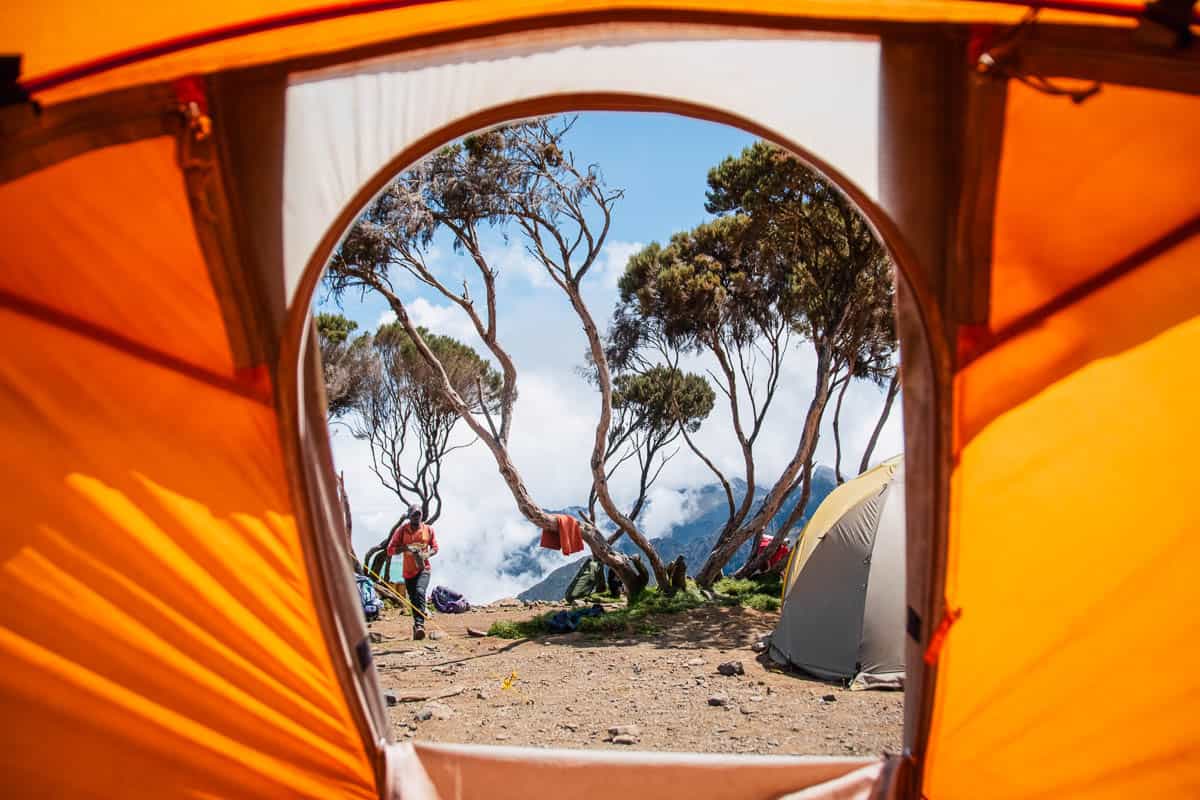13 Things NOT to Bring Camping (And What to Bring Instead)

Getting ready for an upcoming camping trip and not sure what to bring and what to leave at home? I’ve camped for years (including vanlifing) and worked at REI, one of the USA’s largest outdoor cooperatives. In other words, I know a thing or two about essential camping gear.
“By less but buy better.”
You want to strike a balance between comfort and practicality. Knowing what not to pack for a camping trip is crucial so that you won’t overstuff your vehicle or backpack with unnecessary items.
This list has everything you don’t need for your next outdoor adventure, and what to bring instead. From tents and sleeping bags to cookware and utensils, we’ve got your camping checklist covered to make sure your camping trip is a great success!
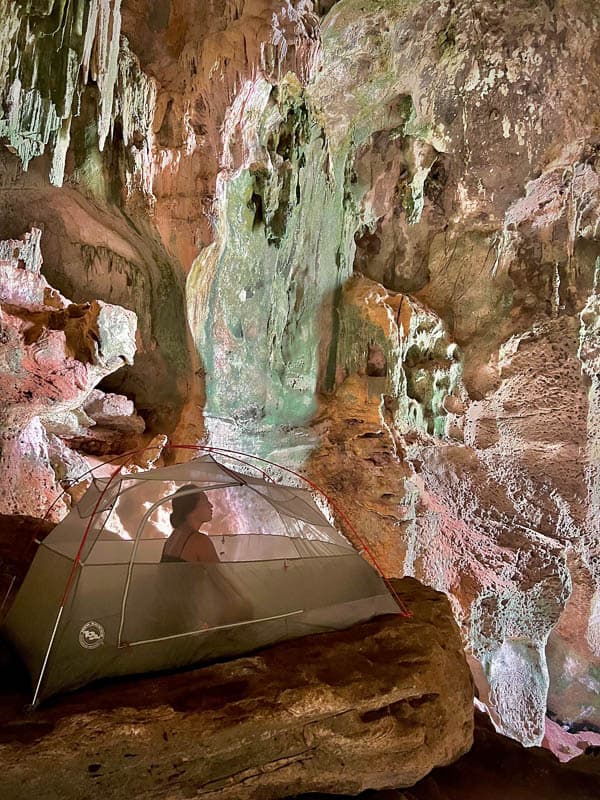
Good quality gear can last over a decade! I personally use and highly recommend all the below items. In fact, you’ll never see me travel without them.
Note: “UL” means ultralight
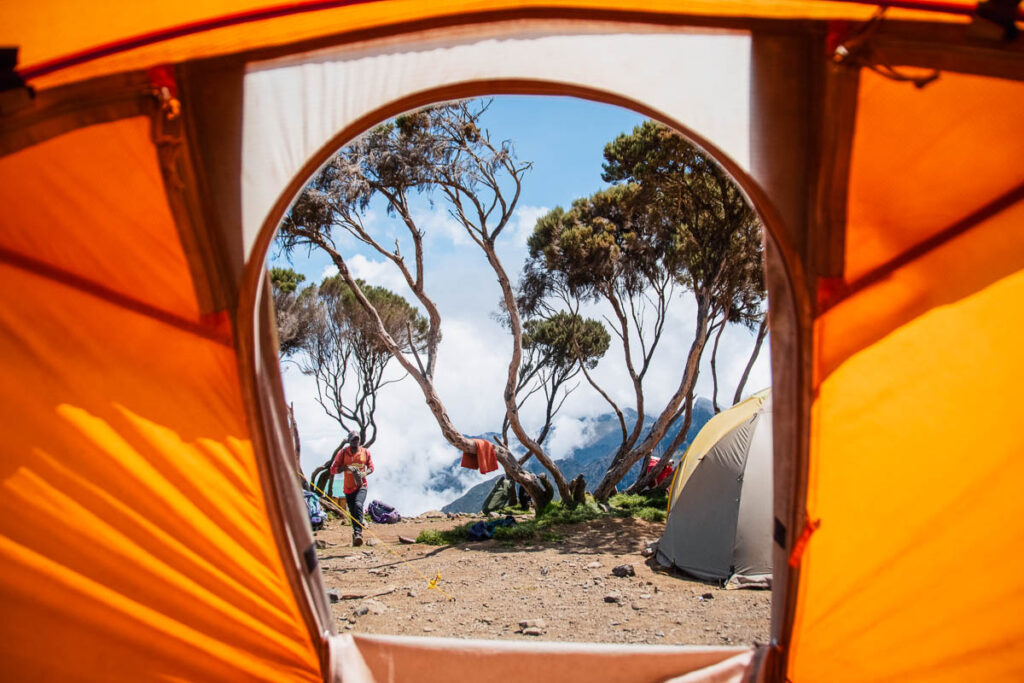
My Best Advice for What to Bring and Not Bring Camping
#1 Find out what works (and what doesn’t)
On your first camping trip, you probably will make some rookie mistakes. Same with the second, third, and fourth times. You’ll realize you need things you didn’t bring and wonder why you bothered to pack other stuff.
Keep a journal of the things you wish you did differently after every experience, so you’ll be better prepared for your next camping trip.
#2 It’s So Expensive. Where do I start?
Camp equipment, especially good camp equipment, can really add up and be very costly. However, I think that the outdoor industry is the only industry where the amount of money you spend directly correlates to quality (with a few exceptions).
Depending on how often you end up camping, I would start with a few basics:
- Decent lightweight sleeping equipment for a colder temperature rating than you think you need
- One solid outer layer and rain jacket
- Durable hiking shoes
- A versatile backpack with lots of pockets
Then over the years, you will swap out the things you don’t like, and experiment until you have the perfect pack.
Things to Consider When Camping
Are you car camping, glamping, reserving a proper campground, or going on an overnight backcountry tent camping?
The essential gear you need to bring will look very different based on how much space you have and the convenience of where you will be setting up your camping spot. It may be obvious to point out that the further you have to walk with heavy equipment, the more lightweight your equipment should be.
For pull-in campgrounds, you are limited only by the size of your vehicle’s trunk and how many people you are packing for.
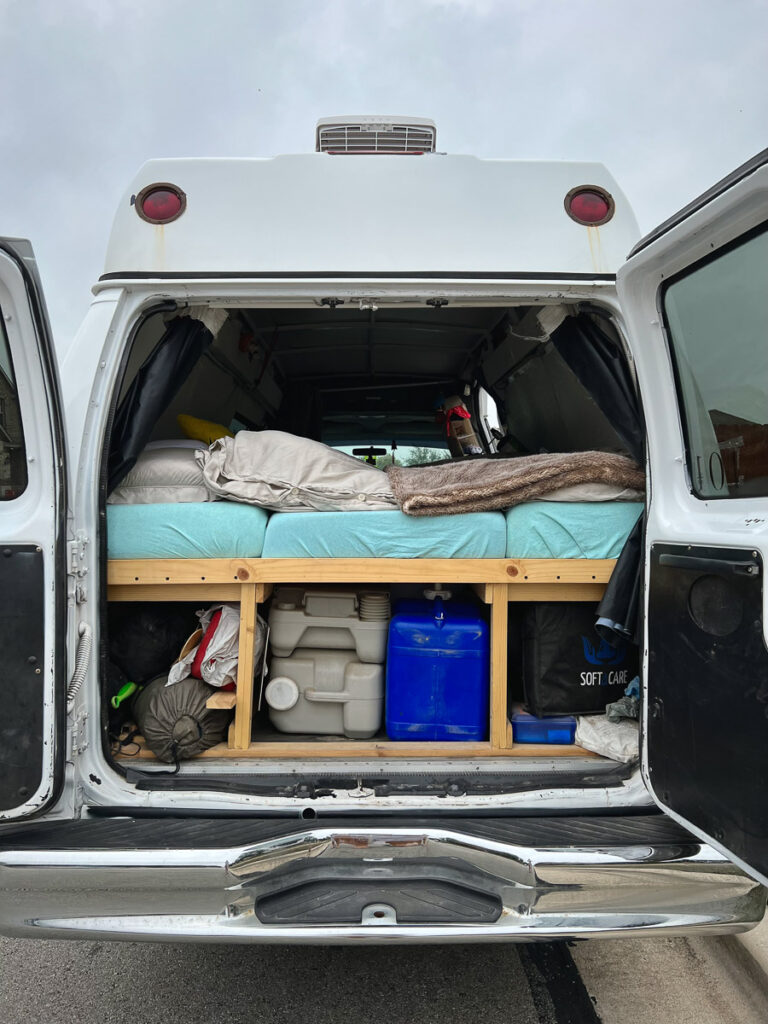
What Not to Bring Camping (And What to Bring Instead)
1. Packing for the Wrong Weather: Excess Clothing and Blankets
Is it summer, but you’re scared you’ll be shivering in cold weather? You don’t want to freeze at night if the temperatures drop. Still, you also don’t need a heavy winter sleeping bag and copious blankets if you’re camping in the heat of summer.
Check the weather forecast for the highs and lows while camping to ensure you bring gear for the appropriate weather. I have always found that fabric-related items end up taking up the most unnecessary space.
You don’t need to bring your entire wardrobe. Stick to a few pieces that are lightweight and versatile, plus an extra outer layer in case it gets cold. On the other hand, being cold sucks, so make sure to bring enough for what you need.
What to Bring Instead:
- Weather appropriate, right-height, good sleeping bag
- Layers and a light jacket (I love Smartwool layers)
- Solid Waterproof Tent for the right amount of people (start with freestanding tents that include poles)
Some of my Favorite Sleeping and Tent Equipment (and what I currently use):
Good quality gear can last more than a decade and make the whole camping experience so much more comfortable. I’ve slowly swapped out equipment over the years and ended up with the following items, and would highly recommend them all.
- Big Agnes Copper Spur HV UL – UltralightBackpacking Tent
- Big Agnes Footprints for Copper Spur Series (Footprints protect the bottom of your tent)
- Therm-a-Rest NeoAir Sleeping Pad
- Ergonomic Inflating Pillows
- Enlightened Equipment Custom Sleeping Bag
- Hummingbird Hammocks Ultralight Hammock (Yes I have slept in this overnight before)
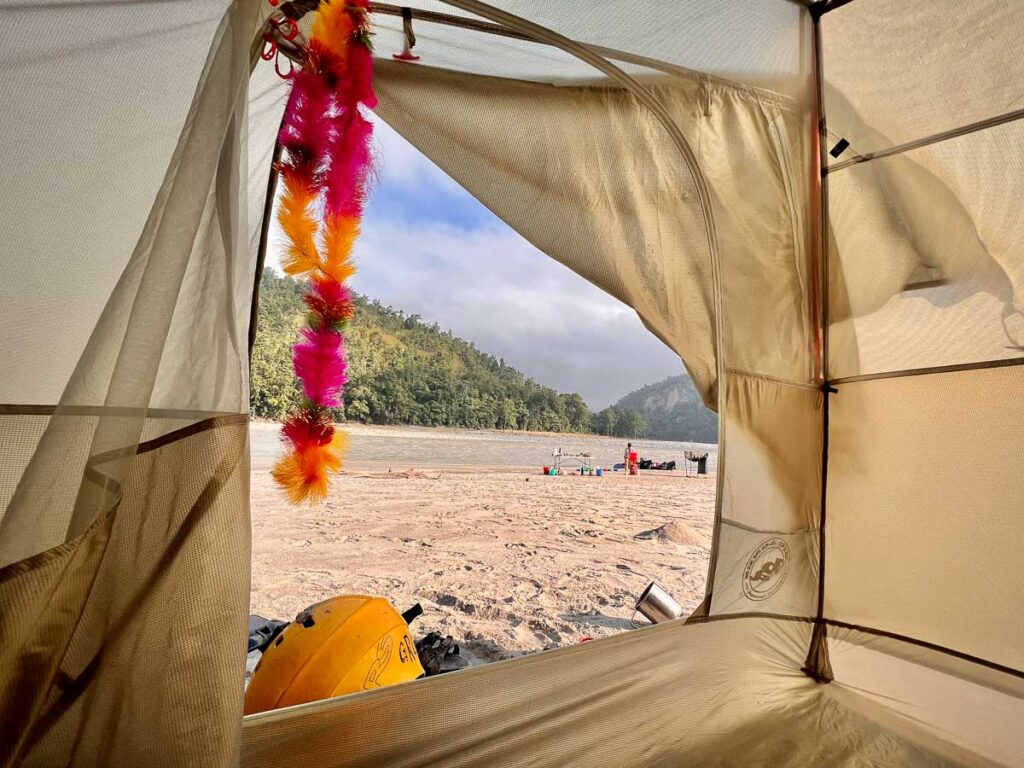
2. Any Unpackable, Not Easy-to-Carry Camp Furniture
Your heavy lawn chair might seem like a great idea to be chilling under the stars before you get to the campsite. But once you’re huffing and puffing from going back and forth from the car to unpack your supplies, you’ll wish you had brought something easier to carry.
From camping chairs to folding tables and more, there are many options for choosing lightweight chilling furniture.
What to Bring Instead:
- A camping hammock that is easy to set up, plus it’s great for relaxing in the sun or under the stars!
- Lightweight camp chairs or stools that can easily be rolled up and stored away when not in use
- A lightweight folding table for easy meal prep and dining, although many proper campgrounds have picnic tables
- A packable, waterproof picnic blanket for a comfortable spot to sit or sleep on.
- A tarp will also come in handy if it rains!
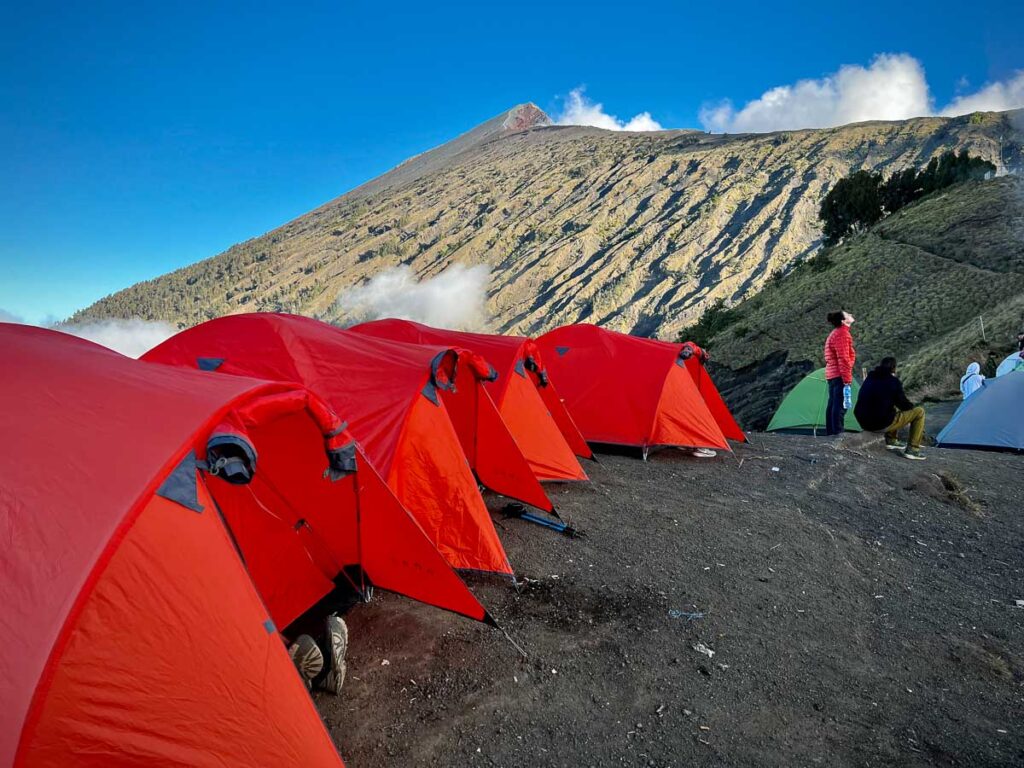
3. Air Mattresses or Air Beds
Leave the airbed at home unless you’re car camping and can fit a mattress in your vehicle. They’re bulky and take up a lot of space. Instead, opt for a lightweight sleeping pad or an inflatable camping pad that’s much easier to transport.
What to Bring Instead:
- A lightweight sleeping pad with the appropriate R-value, which indicates the temperature rating of the pad. The higher the R-value, the more cold-resistant it is, but also, the more expensive. Sleeping pads can be inflatable or a solid mat, which is generally not as warm.
- Battery-powered electric air pump for your inflatable sleeping pad (not necessary, but this one is tiny)
4. Pillows That Take Up Too Much Room
It’s a common mistake to bring your comfy, fluffy pillows from home on camping trips. They take up too much space and can easily get dirty or wet during the trip.
What to Bring Instead:
- A small inflatable pillow that will fit in your bag without taking up too much space.
- A camping pillow if you need something more substantial for a better night’s sleep.
- You can also stuff clothes in your sleeping bag to make it feel more comfortable and help keep your neck aligned.
5. Bring the Right Amount of Kitchen Utensils
It’s important to have the right camp kitchen supplies when camping, as it’s easy to overpack these items too. Too many pots and pans can take up a lot of space in your bag, so only bring what you need for the meals you plan on making.
What to Bring Instead:
- A camp stove with fuel for cooking (backpacking single burner | 2 burner with wind protector)
- Propane Tanks are available for way cheaper in Walmart and most grocery stores (make sure you buy the right fit for your stove)
- Basic cooking and eating utensils from your kitchen. For specifically camping, check out this camp kitchen kit.
- Can opener (the most forgettable thing you wish you brought)
- A multi-tool pocket knife like a Swiss Army Knife or Leatherman
- Durable dishes and cups that won’t break if they get bumped around.
- Throw in some paper towels as well for easy cleanup!
6. Glass Items That Can Break
Glass containers, mason jars, and even bottles can be too fragile for a camping trip. They take up more space and add unnecessary weight, plus they can easily break if you drop them or they get jostled around in your bag.
What to Bring Instead:
- Reusable water bottles made from stainless steel or plastic
- Plastic containers and jars for food storage
- A large thermos or water jug if you need to store a lot of liquids
- Consider investing in a Hydroflask or Yeti insulated mug that keeps your coffee hot (or cold) all day long!
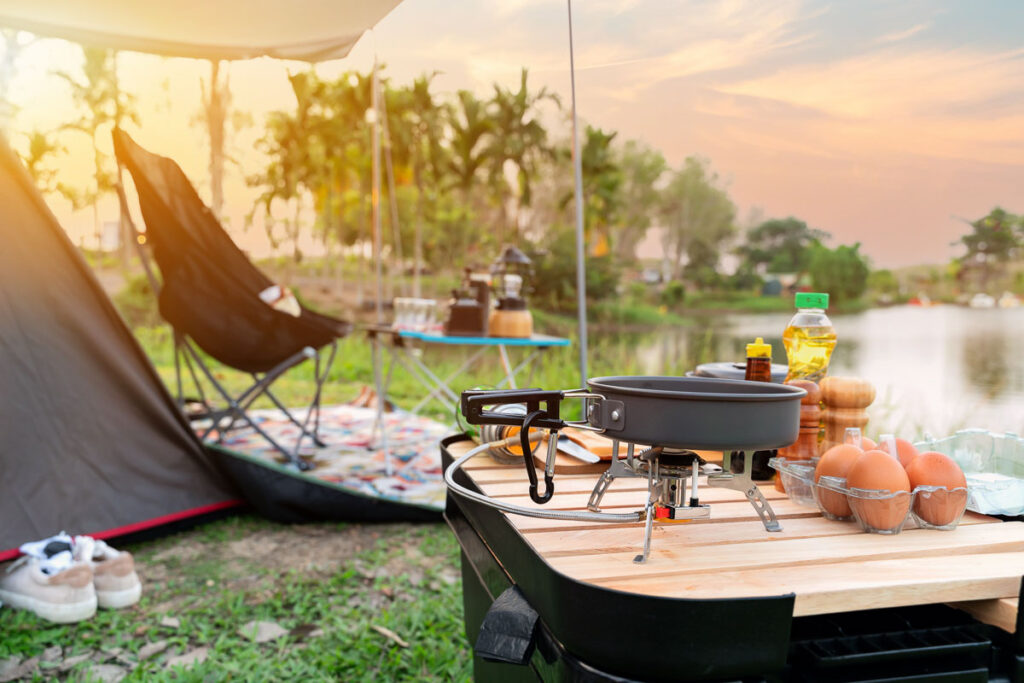
7. Too Much Food, Especially Perishable Goods
Food is one of the most common items that most people bring too much of on their camping trips. I used to overpack and have a ton of food left over by the time we were ready to go home. It’s easy to think that you’ll need more than you really do because no one wants to be without food while they’re in the middle of nowhere.
Exposed fresh foods are also the perfect animal attractant. Bear-proof containers are a must if you’re camping in bear country.
What Food to Bring Camping
- Non-perishable food items like canned goods, nuts, and energy bars
- Pack food that can be cooked quickly on camping stoves or a fire pit (e.g., hot dogs and s’mores)
- Enough food for each day plus one extra meal in case you’re out longer than expected
8. Too Many Electronic Devices
It’s easy to get carried away bringing all of your electronics on a camping trip. Chances are you won’t use them that much, and being disconnected from the internet can be liberating.
That said, you may still need some of your electronics for navigation, lighting, and taking pictures.
What to Bring Instead:
- A power bank that can charge all of your devices while you’re away from a power source
- Cell phone for navigation and picture taking
- A headlamp or flashlight for hands-free lighting
- A solar-powered inflatable lantern for nighttime camp illumination
Things to Bring Camping for Fun
- A deck of cards for playing your favorite card game or a book to read
- A few board games if you’re looking for some group entertainment
- A volleyball or frisbee
9. Heating Appliances That Can Start Fires
Campfires are a beloved part of the camping experience, but bringing things like portable heaters and propane stoves can be dangerous. They can quickly start fires if misused or left unattended.
What to Bring Instead:
- A camping stove (for food) that is designed for safety and easy setup
- Firewood that is seasoned and dry making it easier to start a fire without adding accelerants.
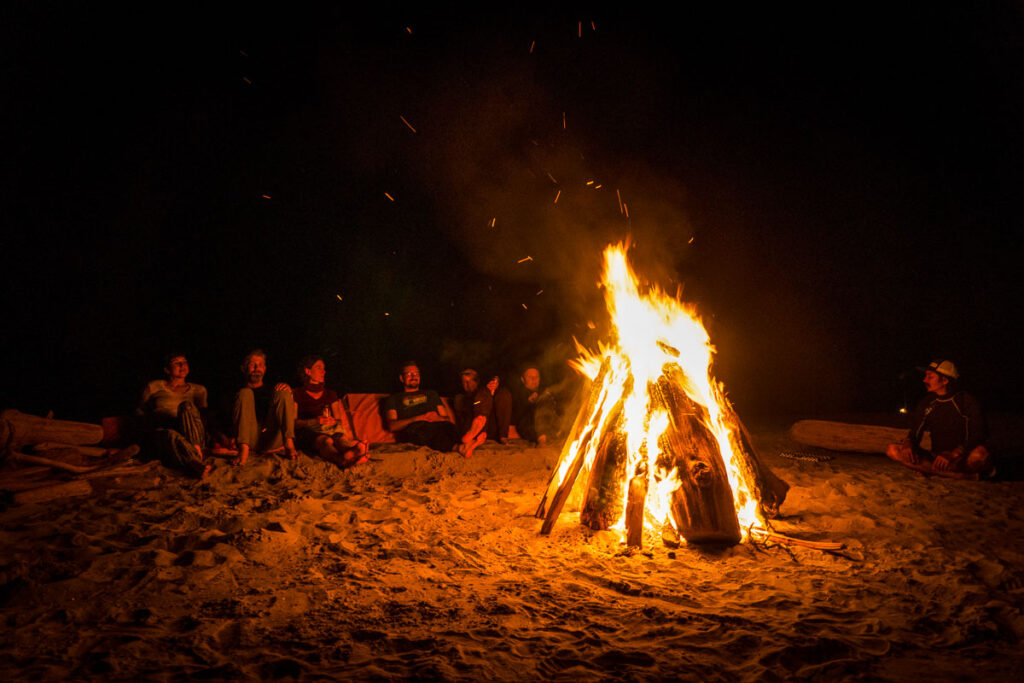
10. Too Much Extra Toiletries
It can be easy to go overboard on toiletries when packing for a camping trip. You might only need some of your regular bathroom products, and they’re likely to take up a lot of space in your bag.
What to Bring Instead:
- A travel-sized toothbrush and toothpaste
- Shampoo and soap that is specifically meant for camping or outdoor use. Biodegradable soap won’t damage the environment if it ends up in a stream or river.
- Sunscreen, insect repellent, and other necessary outdoor products
- Quick-drying towel
11. Heavily scented products
You wouldn’t want to attract any animals with the smell of your body lotion or shampoo. Avoid bringing highly-scented products to remain undetected by wildlife.
What to Bring Instead:
- Unscented body lotion, shampoo, and soap
- Natural insect repellents made from essential oils like citronella or eucalyptus
12. Any Valuable Jewelry or Fancy Clothing
Who are you impressing in the middle of the woods? Leave your expensive jewelry and fancy clothes at home. The great outdoors is a great place to easily lose or damage nice things.
What to Bring Instead:
- Durable clothing made from lightweight materials like nylon and polyester
- Comfortable shoes for outdoor exploration (River sandals Chacos | OC Lightweight sneakers | Hiking shoes)
- A light rain jacket in case of unexpected wet weather
- A wide-brimmed hat or baseball cap to protect you from the sun.
13. Anything You Don’t Want to Pack Out
“Leave no Trace” is a big saying in the camping community.
Or “Take only memories, leave only footprints.”
You want to make sure you bring everything out that you brought in, except toilet paper is probably ok to leave in a hole. Bring trash bags or plastic bags to tidy up before you go.
Trash bins or dumpsters are usually provided at campgrounds. If you are dispersed camping, bring everything out with you.
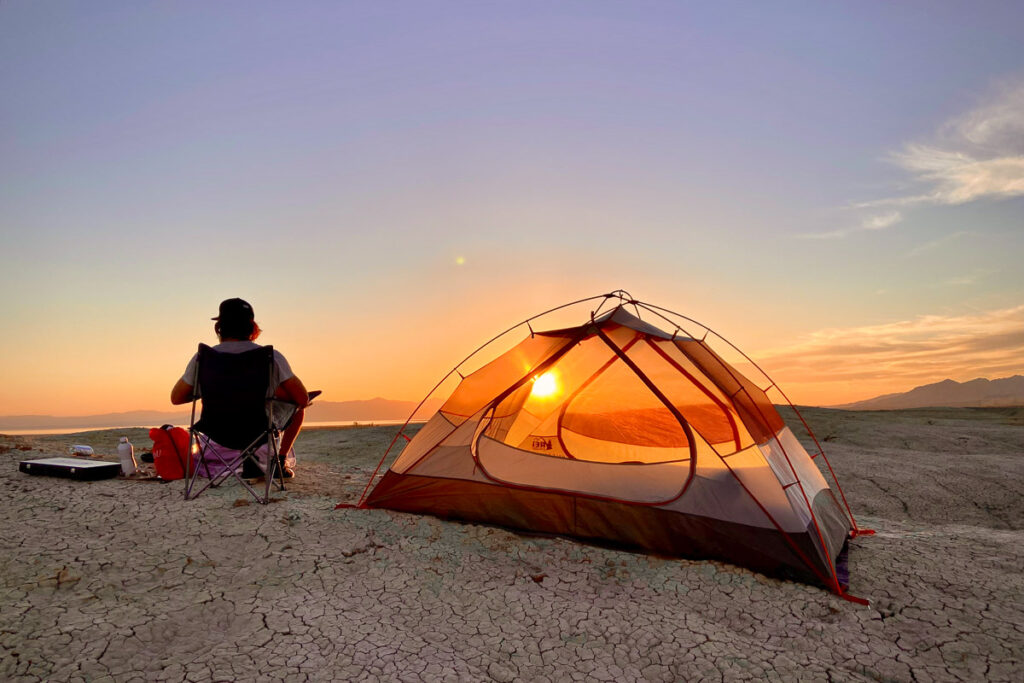
Other Camping Gear To Bring
- First Aid Kit
- Enough Water
- Fire Starter (lighter or if you want to try your hand at manually starting a fire)
- Extra Batteries
- Portable Speakers (like JBL Clip which has an attachable)
Final Thoughts: What Not to Bring Camping (And What to Bring Instead)
For beginners, it can be hard to know what’s necessary to bring for a great camping trip and what’s just taking up space. These are just a few examples of essential items you should avoid bringing and some better alternatives.
With a little bit of planning, the right supplies, (and more experience), you’ll figure out what works best for you and your next camping adventure.
Catherine Xu is the founder and author of Nomadicated, an adventure travel blog that helps travelers cross off their bucket list. Since discovering traveling in 2015, she has lived and journeyed to 65 countries across 5 continents and vanlifed the west coast USA for 2+ years. These days, she splits her time in Southeast Asia and California while sharing her travel stories and resources based on first-hand experiences. Catherine's other works has been referenced in major publications like MSN, Self, and TripSavvy.

